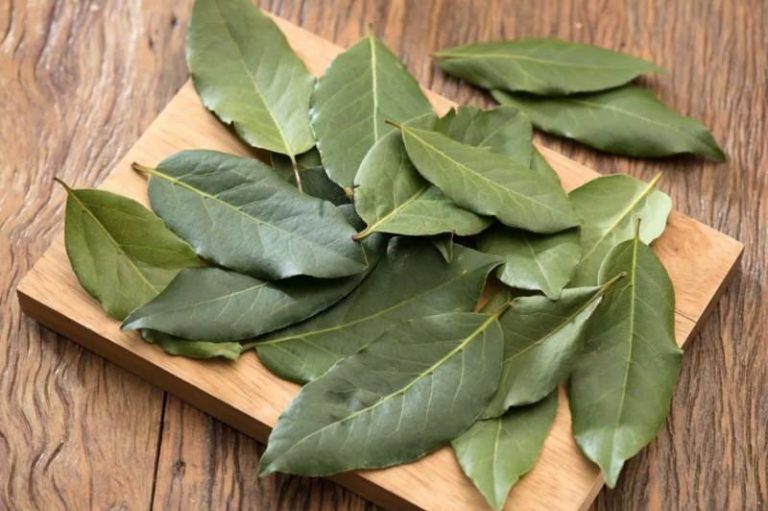The laurel is a tree whose leaves are widely used for its medicinal benefits, and also in the kitchen for its aromatic power. Discover its properties and contraindications.

What is laurel?
The laurel is a tree whose leaves stand out as being commonly used in many homes for their important benefits and properties, why has become always a regular ingredient in the production of a wide variety of natural remedies. In addition, it stands out for its popular use in the kitchen, due to its great aromatic power.
It is a tree that, from a historical point of view, came to be considered by the Greeks as the sacred tree of Apollo. Not surprisingly, the Romans used it as a symbol of victory.
Its components include formic, pelargonic, acetic, cinnamic, lauric, caproic, propionic, linoleic and oleic acids. But it also contains camphene, terpinene, limonene and sabinene.
Scientifically known as Laurus nobilis L., it consists of an evergreen tree belonging to the Lauraceae family. Its trunk is straight, smooth, which can exceed 10 meters in height (its average height ranges from 6 to 12 meters in height), and is native to the Mediterranean area.
What are the benefits of laurel?
Laurel is attributed antiseptic, expectorant, anti-inflammatory and bactericidal effects. For this reason, it is common to find it as an ingredient in many natural remedies that seek to treat and prevent a wide variety of respiratory disorders and diseases.
Of course, with regard to its food composition, laurel contains carbohydrates, potassium, fiber, calcium, magnesium, phosphorus, vitamin B6, folic acid and vitamin C, among others. It should be taken into account that it is not advisable to take laurel in excess, since it can be harmful for those who have a sensitive stomach.
It acts as a wonderful stomach tonic, which means that by helping in the segregation of the different digestive juices, especially in large meals, it is fundamentally digestive by facilitating peristaltic movements. That is, it acts as a digestive tonic, facilitating digestion.
But this digestive quality does not end there, since it is also capable of preventing heartburn, and in case of gas and flatulence, it naturally helps to expel it. In addition, it is commonly used to stimulate appetite, thanks to its content in different active ingredients capable of improving appetite. To enjoy this quality, it is advisable to take a laurel infusion before each main meal.
However, there is no doubt that laurel is widely known for its qualities and benefits for the respiratory system. Precisely because of its antiseptic, expectorant, anti-inflammatory and bactericidal benefits, it becomes a traditional natural remedy to treat and alleviate various conditions and diseases of the respiratory system.
For example, laurel naturally helps to relieve symptoms – and discomfort – related to colds and flu, pharyngitis or bronchitis. Why? Mainly because it helps expectoration, helping our respiratory system to better expel mucus (due to its expectorant qualities).
Due to its antiseptic qualities, externally the laurel helps to treat certain skin conditions caused by the contagion of fungi.
Main properties of laurel, in summary
Among the most important benefits of laurel, we find that:
- It stimulates the digestive system, increasing secretions and helping peristaltic movements, which facilitates digestion.
- In cases of flu, bronchitis and other respiratory system conditions, it acts as an expectorant.
- It favors the elimination of fluid, which is why it helps the kidneys. In addition, it is good in weight loss diets.
- It reduces abundant periods and favors those that are poor, so we can say that laurel regulates menstruation.
- It also helps against anxiety and stress, as it is a relaxing plant.
The main uses of laurel in the kitchen
Due to its great aromatic power, and because its leaves are preserved almost perfectly throughout the year (because they are hard and leathery), the truth is that the laurel enjoys a privileged position in the kitchen of many houses, being used precisely as an aromatic in broth dishes and soups.
For example, one of the most common uses of bay leaves in the kitchen is to flavor broths with meat, such as stews and meats in sauce.
What are the contraindications of laurel?
An excessive consumption of bay leaf, especially in the form of an infusion, can have digestive effects contrary to its ability to facilitate digestion, since it can cause annoying symptoms such as feeling nausea, vomiting and diarrhea.
In addition, its consumption is not recommended in case of digestive ulcer or gastritis, since it can be irritating and increase your discomfort. That is, its consumption is not recommended in people with a delicate stomach.
On the other hand, its consumption by children under 6 years of age, or during pregnancy or breastfeeding, is not recommended.
Externally, its use on the skin is not recommended in people with hypersensitivity to this tree, as it can cause the appearance of serious dermatological and allergic reactions. In addition, it can cause photosensitivity, so it is not recommended to sunbathe in areas that have been in contact with the infusion of bay leaf (or creams made with it).































